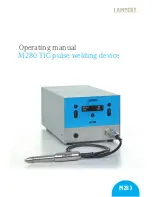
RISCHI DIRETTI ALLE PERSONE
In questo paragrafo verranno illustrati i rischi che operatore, manu-
tentore e chi si trova nell’area di lavoro del sollevatore, possono
correre a causa di un uso non corretto del sollevatore stesso.
RISCHIO DI SCHIACCIAMENTO
DELL’OPERATORE
dovuto ad una errata posizione
dell’operatore addetto al quadro
comandi.
Durante la fase di discesa dei
bracci e del veicolo l’ operatore
non deve mai portarsi sotto le parti
mobili in fase di discesa ma opera-
re soltanto dalla zona comando
(Fig.20).
Fig.20
Rischio di schiacciamento
dell’operatore
RISCHIO DI SCHIACCIAMENTO
DEL PERSONALE IN GENERE
Durante la fase di discesa del sol-
levatore e del veicolo il personale
non deve sostare in zone interes-
sate dalle traiettorie di discesa
(Fig.21). L’operatore deve mano-
vrare solo dopo essersi accertato
che nessuna persona sia in posi-
zioni pericolose.
Fig.21
Rischio di schiacciamento
del personale in genere
RISCHIO DI URTO
Dovuto alle parti del sollevatore o
del veicolo posizionate ad altezza
d’uomo.
Quando, per ragioni di lavoro, il
sollevatore viene fermato a quote
relativamente basse (inferiori a
1,75 m dal suolo) vi è il rischio di
urtare contro le parti non eviden-
ziate da particolari colorazioni
(Fig.22).
Fig.22
Rischio di urto
RISCHIO DI SPOSTAMENTO DEL
VEICOLO
Dovuto ad operazioni da compiere e
che generano spinte sul veicolo
(Fig.23).
Se il veicolo é di dimensioni o pesi
ragguardevoli uno spostamento può
rappresentare una situazione di so-
vraccarico o sbilanciamento non
previsto pertanto evitare in maniera
assoluta tali manovre.
Fig.23
Rischio di spostamento del veicolo
RISKS TO PERSONS
This paragraph illustrates risks to which the operator, maintenance
worker or any person near the operating area of the lift may be
exposed in the case of improper use of equipment.
RISK OF CRUSHING
(OPERATOR)
Possible if the operator control-
ling the lift is not in the specified
position at the command panel.
When the platforms and vehicle
are descending, the operator
must never be partly or comple-
tely underneath the moving struc-
ture. During this phase the ope-
rator must remain in the com-
mand zone fig.20.
Fig.20 Operator crushing risk
RISK OF CRUSHING
(PERSONNEL)
When the platforms and vehicle
are descending personnel are
prohibited from entering the area
beneath the moving parts of the
lift (fig.21). The lift operator must
not start the manoeuvre until it
has been clearly established that
there are no persons in potential-
ly dangerous positions.
Fig.21
Generic people crushing risk
RISK OF IMPACT
Caused by parts of the lift or the
vehicle that are positioned at
head height.
When, due to operational rea-
sons, the lift is immobilised at re-
latively low elevations (less than
1.75 m from the ground) person-
nel must be careful to avoid im-
pact with parts of the machine
not marked with special hazard
colouring (Fig.22).
Fig.22 Impact risk
RISKS DUE TO VEHICLE
MOVEMENT
Movement may be caused during
operations which involve force suf-
ficient to move the vehicle (Fig.23).
If the vehicle is of considerable di-
mensions or weight, movement
may lead to overloading or unba-
lancing; all measures must be ta-
ken to avoid such an occurrence.
Fig.23
Vehicle movement risk
18
Содержание 232IH
Страница 1: ...I SOLLEVATORE ELETTROIDRAULICO A 2 COLONNE GB 2 POST ELECTRO HYDRAULIC LIFT 232IH...
Страница 2: ......
Страница 40: ...CARRELLI E BRACCI CARRIAGES AND ARMS SCHLITTEN UND ARME CHARIOTS ET BRAS CARROS Y BRAZOS...
Страница 41: ...SICUREZZE SAFETY DEVICES SICHERHEITSVORRICHTUNGEN DISPOSITIFS DE S CURIT DISPOSITIVOS DE SEGURIDAD...
Страница 51: ......
Страница 53: ......
















































